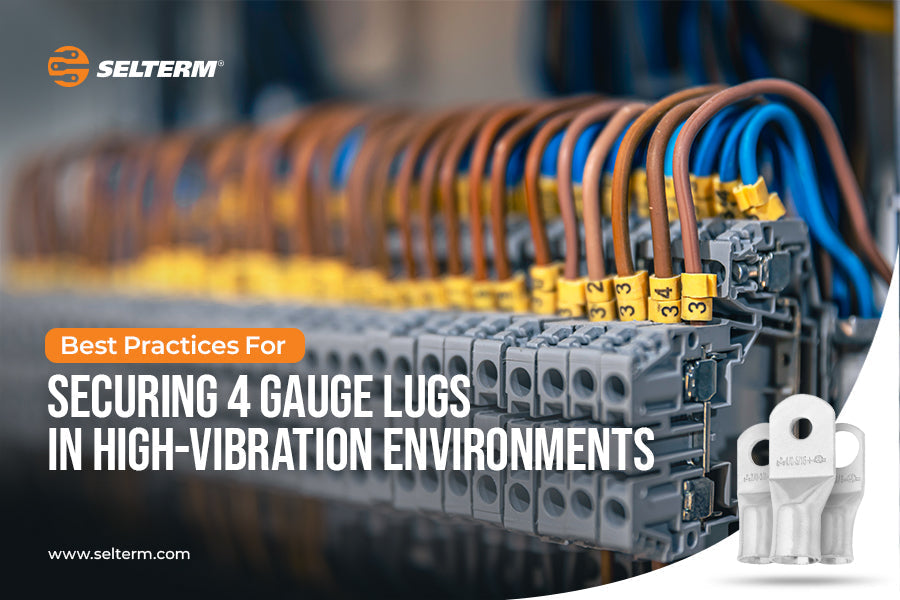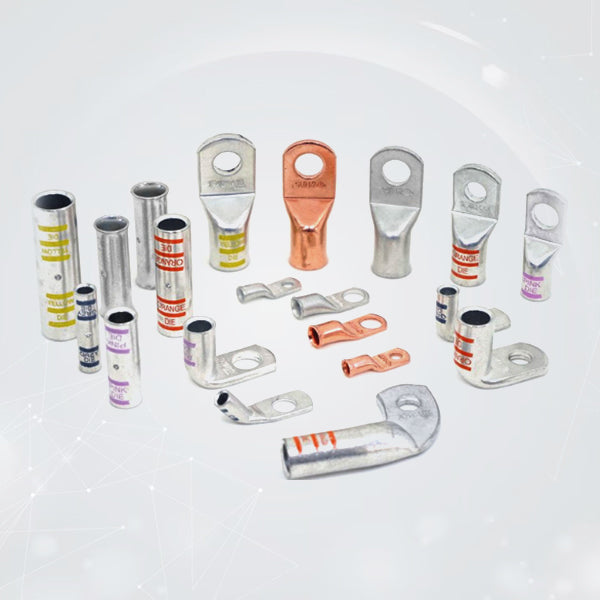
Best Practices For Securing 4 Gauge Lugs In High-Vibration Environments
When working with electrical connections in a vehicle, boat, RV, or industrial setting, there is a challenge with vibrations. The repeated shaking and vibration can ultimately result in weakened joints, fasteners may loosen, and the reliability of your electrical system can suffer. This is particularly true when connecting 4 gauge lugs which are used for medium-high amperage connections, such as starter motors, inverters, and marine power distribution.
If these connections are not properly secured, you can see voltage drops, overheating, or complete failure of the system. On the other hand, if you take the right approach, your 4 AWG battery lug, also known as 4 gauge lug or 4 AWG ring lug or 4 gauge cable lug, can perform without issue, even with severe vibrations.
Let’s break down the best practices for securing and maintaining 4 gauge cable lugs in high-vibration environments.
Why Vibrations Put Cable Connections At Risk
Electrical connectors that live in high-vibration environments such as vehicle engine bays, off-road vehicles, heavy equipment, or boats, are constantly subjected to micro-movements. Over time, these micro-movements can:
- Mechanical fasteners, such as bolts or screws, may gradually loosen, which holds the lugs in place.
- Micro-gaps will be formed between the conductor and lug over time which can create arcing.
- This increases resistance, which creates heat. Heat creates damage to the cable.
- Accelerates corrosion, particularly in outdoor or marine environments.
This is why securing a 4 AWG ring lug isn’t just about a tight fit, it’s about ensuring long-term performance.
Choosing The Right 4 AWG Lugs For The Job
Before diving into installation practices, it’s crucial to select the right lug. Not all lugs are designed to handle the same conditions.
- Material considerations: Bare copper lugs are the best option for the highest conductivity. Tinned copper provides additional corrosion resistance, and is a better choice for marine applications or external applications.
- Sizing: Using a lug that does not exactly match your cable size can lead to weak crimping and the potential risk of vibration. Always be sure your 4 AWG cable lug is sized specifically for 4 gauge conductors.
- Ring type selection: In high-vibration environments, ring lugs are more reliable than spade lugs since they cannot slip off a terminal stud even if slightly loosened.
Crimping For Maximum Strength
A secure electrical connection starts with a solid mechanical bond. Crimping is the most common method for attaching a lug to a cable, and doing it right makes all the difference.
- Use a proper crimping tool: A hammer crimper or pliers won’t deliver consistent results. Instead, use a hex or hydraulic crimper designed for 4 AWG ring lugs.
- Apply even compression: Uneven crimping creates weak points where vibrations can cause fractures or loosen connections.
- Check for pull strength: After crimping, tug firmly on the cable. If it shifts or loosens, the crimp isn’t strong enough.
Insulation And Strain Relief
Even with a strong crimp, the exposed joint is still vulnerable. That’s where insulation and strain relief come in.
- Heat shrink tubing: Always cover the crimped area with adhesive-lined heat shrink tubing. This seals out moisture, reduces corrosion, and provides extra mechanical stability.
- Strain relief clamps: Secure cables near the lug using clamps or zip ties. This prevents the wire from flexing directly at the terminal, reducing stress at the crimp point.
- Bundle smartly: Avoid letting heavy cables hang unsupported, especially in vehicles or boats. Over time, vibrations will fatigue the lug connection.
Fastening And Torque Control
When installing a 4 AWG battery lug onto a terminal stud, the fastening technique is just as important as crimping.
- Use lock washers or locknuts: These prevent the nut from backing out due to vibration.
- Avoid over-tightening: Excess torque can crack the lug or distort the cable strands inside. Follow manufacturer torque specs where available.
- Check alignment: Ensure the lug sits flat against the terminal surface. Misalignment can create gaps that loosen under vibration.
Regular Inspections And Maintenance
No matter how perfect the installation, vibration-prone systems require routine checks.
- Check for discoloration: The signs of overheating or arcing are typically darkened copper.
- Check tightness: As a best practice, re-torque terminal nuts periodically, especially during the initial hours of operation of the system.
- Inspect heat shrink seals: The cracking or looseness of the tubing could indicate movement occurring at the joint.
- Multimeter test: Measuring voltage drop across a lug under load can expose issues related to hidden resistance.
Real-World Applications
- Car Audio Systems: High-powered amplifiers rely on stable connections. A loose lug in a vibrating trunk space can cause distorted sound or amplifier shut-offs.
- Marine Power Systems: Boats are subjected to continual vibration and salt exposure. Making a secure connection using tinned copper 4 AWG ring lugs, along with marine-grade heat shrink is going to provide a much more reliable connection.
- Off-Road Vehicles: The jarring impacts associated with off-road driving require vibration-resistant lug connections for a winch or any auxiliary lighting.
Wrapping Up
In an environment with high vibration, how you secure a 4 gauge lug might be the difference between having reliable power and having an eternal electrical headache. From proper lug selection to professional crimping, insulation, fastening, and routine inspection, the entire process works towards long-term reliability.
When installing a car audio system, marine electronics, or RV wiring project, taking the time to properly attach your 4 AWG ring lugs will reward you with performance, safety, and peace of mind.
For reliable options, explore Selterm’s range of 4 gauge cable lugs. Built for durability and performance, they’re designed to handle the toughest conditions with confidence.

